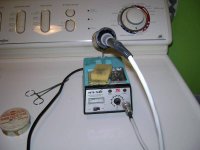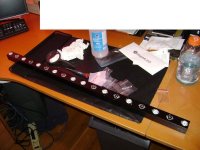Wow, I like those a lot! Nicely done.Have you had the opportunity to use them yet?
honored by the Master of DIY, hope i can handle this

i started a real world test in June.
seeds under one panel for the first 4 weeks. AF; 18/6 in soil
now there is one plant under 2 Panels(60W) and she is filling up my Growbox. plant size 45 x 50 cm height 50 cm.












 .
.
